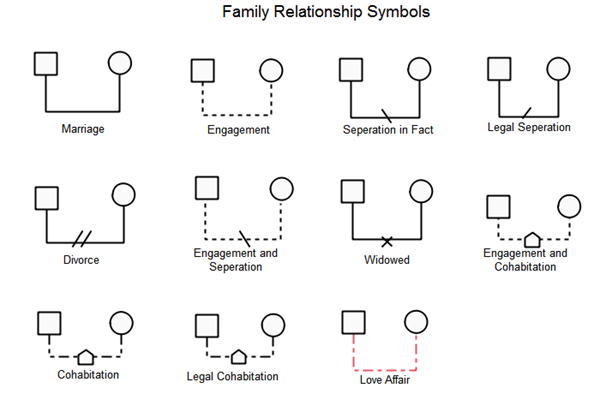
What this step is about is getting into contact with possible sources of information. It’s important to keep in mind that not everyone wants to talk about their personal story. This will mostly depend on the direct information you’re able to get. Not all genograms go as deep as others. Some focus on obvious aspects while others go deeper into one or many aspects. You can decide which crucial incidents you want to shed light on by remembering your genogram’s purpose. They marked a before and after in these family members’ lives. Lastly, make a third group of questions to dig into crucial family incidents. These are moments of crisis or serious problems that several family members had in common. Then there should be a group of questions that will help you go deeper into the specific details about each family member. For example, illnesses they have or had, pain they’ve had to deal with, hobbies and interests, important experiences, major conflicts, etc. It should also include other things like social status, level of education, profession, number of children, sex of children, etc.
#How to do a genogram series#
It should consist of a series of basic questions eliciting demographic data. They should include things like: names, dates (birth, death, marriage, divorce, moving cities, etc). What it means is coming up questions to gather the information you need for your genogram. This is one of the most important steps and it depends on the purpose you decided on. Make a questionnaire to gather information And lastly, decide how many generations your genogram will include. It’s best to make a list of living members that you can get in touch with. Then make a new list of people who can give you information about family members you can’t get in touch with. Here, it’s best to find other sources of information to verify the accuracy of what they say. In other words, you can only get information about a family member through what other people say about them. There are other cases where contact with other generations is done indirectly. Ideally you’ll start with three generations, but that’s not always possible. There are families where an entire generation has disappeared, or they don’t have contact with some members. It’s important to give yourself a realistic goal. Decide on the number of generations you’ll analyze In any case, the important thing is to determine the purpose before you start. There are also times when a genogram has one specific purpose. It’s perfect if you’re asking yourself: where does my depression come from? You can trace a particular condition down through the different generations. G enograms also include valuable information about recurring or common emotional problems in a family. They may be psychological patterns picked up and spread through the family environment. Family history is also genetic history and helps you visualize inherited physical strengths and weaknesses.

Sometimes the data you get is extremely useful for doctors. But you can use that information in many different ways. The first thing to do is determine what the purpose of the genogram will be. Of course, they all have to do with information about a person’s family history and family environment.

Recollection of basic information about a person’s family.You make a genogram in three basic steps: They’re also valuable tools for increasing your self-knowledge. In many cases, it helps you come to a theory about the root causes of certain problems. It could be about personality, emotional management, etc. It’s particularly useful for finding patterns: genetic issues, inter- or intragenerational problems, and environment-based behavioral patterns.Ī genogram helps you quickly visualize the way your family structure looks. This information is useful when it comes to a medical treatment and education.īut anyone can make their own genogram to get to know themselves better. We use it to gather and organize information about a person’s immediate environment. You are a leaf that doesn’t know it is part of a tree.” “ If you don’t know history, then you don’t know anything.


 0 kommentar(er)
0 kommentar(er)
